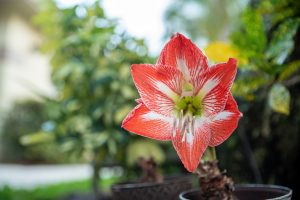Hydrangeas, with their breathtaking blooms and lush foliage, are a staple in many gardens. But did you know that their beauty can be enhanced even further by planting the right companions? These partner plants not only complement the hydrangea’s visual appeal but also provide benefits like pest control, shade, and even nutrient enrichment.
Let’s explore some of the best companions for hydrangeas, focusing on three popular and versatile plant families: Daylilies, Hostas, and Begonias.
Daylilies: A Burst of Color and Resilience
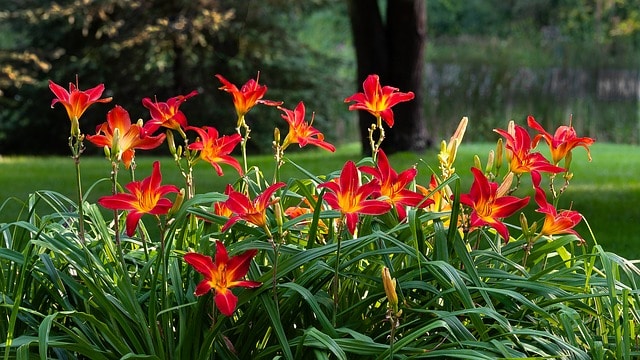
Daylilies, with their vibrant blooms and easy-going nature, make excellent companions for hydrangeas. Their diverse range of colors, from sunny yellows to deep purples, adds a burst of life to the garden.
Why They Work: Daylilies thrive in similar conditions as hydrangeas, preferring well-drained soil and partial shade. They also attract beneficial insects like butterflies and bees, which help pollinate your hydrangeas and deter pests.
Bonus: Daylilies are known for their resilience. They tolerate a wide range of soil types and are relatively pest-free, making them a low-maintenance addition to your garden.
Hostas: A Symphony of Texture and Shade
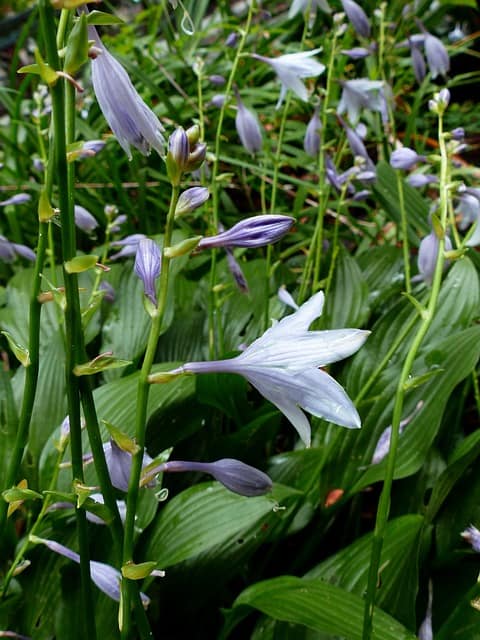
Hostas, with their dramatic foliage and elegant, cascading forms, create a beautiful textural contrast with the bold blooms of hydrangeas. Their cool, green, or variegated leaves provide a welcome shade to the hydrangea’s roots, especially in hot climates.
Why They Work: Hostas and hydrangeas share a preference for moist, well-drained soil and partial shade. They also benefit from each other’s presence – the hostas’ dense foliage helps to retain moisture around the hydrangea’s roots, while the hydrangeas’ larger blooms provide a bit of overhead shade for the hostas.
Bonus: Hostas are known for their ability to deter deer and rabbits, offering an extra layer of protection for your hydrangeas.
Begonias: Adding a Touch of Elegance and Delicate Beauty
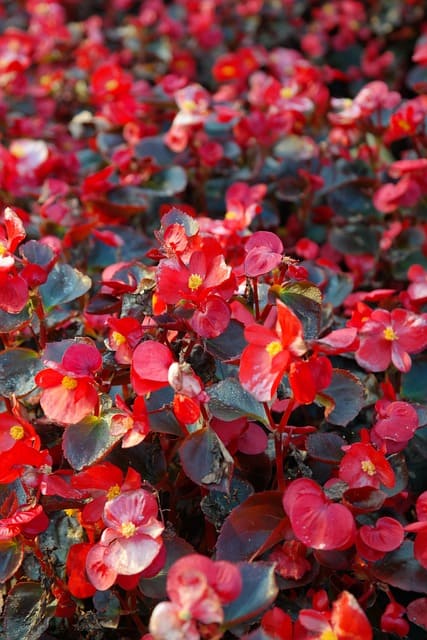
Begonias with their delicate flowers and captivating foliage, bring a touch of elegance and vibrancy to any garden. They offer a range of colors and textures, creating a beautiful contrast with the bold blooms of hydrangeas.
Why They Work: Begonias thrive in similar conditions as hydrangeas, preferring partial shade and well-drained soil. They also help to suppress weeds, creating a cleaner and more aesthetically pleasing garden.
Bonus: Begonias can be planted in containers, allowing you to create a stunning display of color and texture right beside your hydrangeas.
Ferns: Adding a Touch of Ancient Elegance
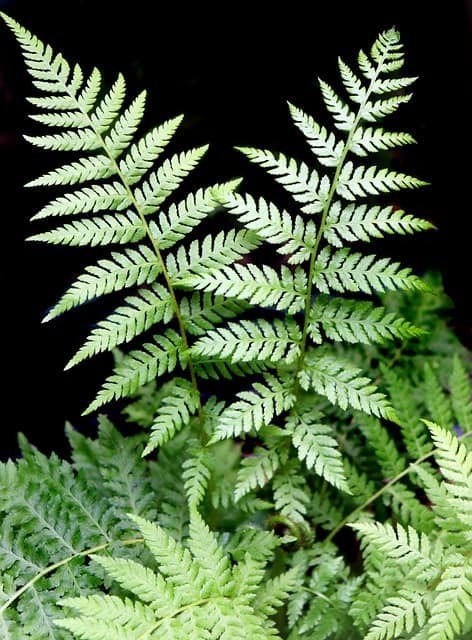
Ferns, with their delicate fronds and ancient allure, create a captivating contrast with the bold blooms of hydrangeas. They bring a touch of woodland charm and add a layer of texture and movement to the garden.
Why They Work: Ferns and hydrangeas share a preference for moist, well-drained soil and partial shade. The ferns’ delicate foliage adds a sense of lightness and airiness, while the hydrangeas’ bold blooms provide a focal point.
Bonus: Ferns are excellent at suppressing weeds, creating a cleaner and more aesthetically pleasing garden. Their spreading nature also helps to retain moisture around the hydrangea’s roots, especially in dry climates.
Foxgloves: A Symphony of Color and Height
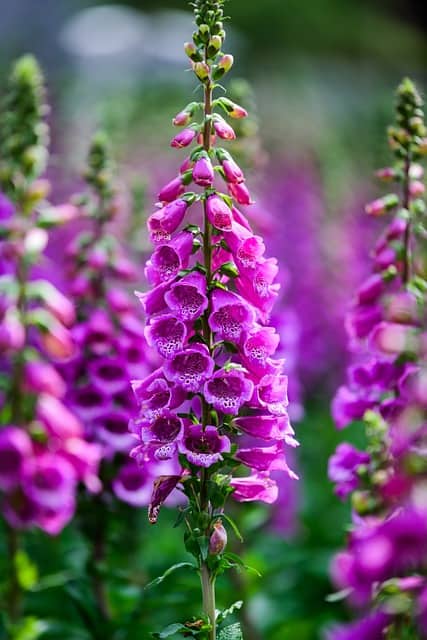
Foxgloves, with their tall spires of vibrant flowers, add a touch of drama and whimsy to the garden. Their delicate, bell-shaped blooms create a beautiful contrast with the round, showy heads of hydrangeas.
Why They Work: Foxgloves thrive in similar conditions as hydrangeas, preferring well-drained soil and partial shade. Their verticality adds a sense of height and depth to the garden, creating a visually appealing layered effect.
Bonus: Foxgloves attract hummingbirds and other pollinators, adding a touch of life and movement to your garden. Their foliage also provides a natural barrier against weeds, reducing maintenance efforts.
Blue Fescue: A Touch of Cool Elegance

Blue Fescue, with its wispy, bluish-green foliage, creates a beautiful textural contrast with the bold blooms of hydrangeas. It adds a touch of cool elegance and softens the overall look of the garden.
Why They Work: Blue Fescue thrives in similar conditions as hydrangeas, preferring well-drained soil and partial shade. Its low-growing, clump-forming habit creates a soft, textured groundcover, complementing the hydrangea’s upright form.
Bonus: Blue Fescue is drought-tolerant and requires minimal maintenance, making it an ideal companion for busy gardeners. Its silvery-blue foliage also provides a beautiful backdrop for the hydrangea’s vibrant blooms.
Coral Bells: A Symphony of Color and Texture

Coral Bells, with their delicate, bell-shaped flowers and captivating foliage, bring a touch of elegance and vibrancy to any garden. Their diverse range of colors, from deep reds and purples to cool greens and silvers, creates a beautiful contrast with the bold blooms of hydrangeas.
Why They Work: Coral Bells thrive in similar conditions as hydrangeas, preferring partial shade and well-drained soil. Their low-growing habit creates a beautiful groundcover, complementing the hydrangea’s upright form.
Bonus: Coral Bells are known for their attractive foliage, which remains vibrant throughout the growing season. Their delicate flowers also attract hummingbirds and butterflies, adding a touch of life and movement to your garden.
Flowering Dogwood: A Touch of Grace and Elegance
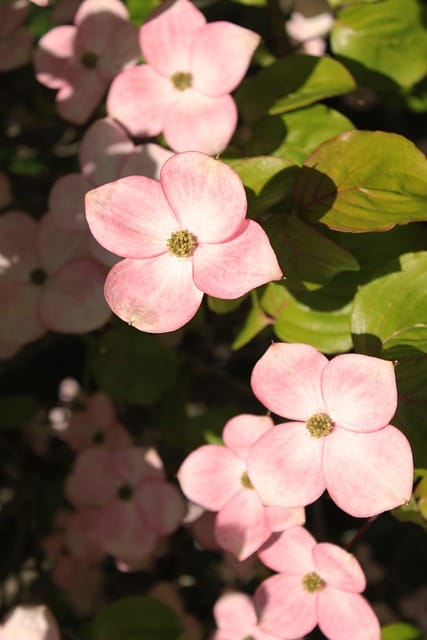
Flowering Dogwood, with its graceful branches and stunning blooms, adds a touch of sophistication and elegance to the garden. Their white, pink, or red bracts (modified leaves) create a beautiful contrast with the vibrant blooms of hydrangeas.
Why They Work: Flowering Dogwood thrives in similar conditions as hydrangeas, preferring well-drained soil and partial shade. Their delicate blooms and attractive foliage provide a beautiful backdrop for the hydrangea’s vibrant display.
Bonus: Flowering Dogwood is a relatively low-maintenance tree, making it an ideal companion for busy gardeners. Their attractive bark and fall foliage also add visual interest throughout the year.
Double Reeves Spirea: A Burst of Color and Texture
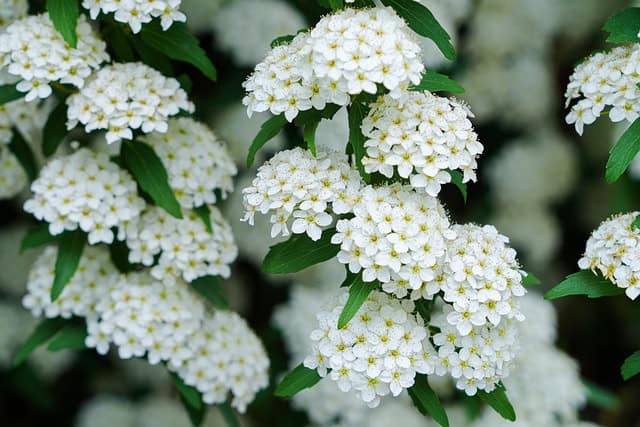
Double Reeves Spirea, with its cascading branches and delicate, double flowers, creates a beautiful textural contrast with the bold blooms of hydrangeas. Their vibrant pink flowers add a touch of whimsy and romance to the garden.
Why They Work: Double Reeves Spirea thrives in similar conditions as hydrangeas, preferring well-drained soil and partial shade. Their graceful branches and delicate flowers create a beautiful layering effect, enhancing the overall visual appeal of the garden.
Bonus: Double Reeves Spirea is a relatively low-maintenance shrub, making it an ideal companion for busy gardeners. Its vibrant pink flowers also attract butterflies and other pollinators, adding a touch of life and movement to your garden.
Lamb’s Ear: A Touch of Softness and Texture
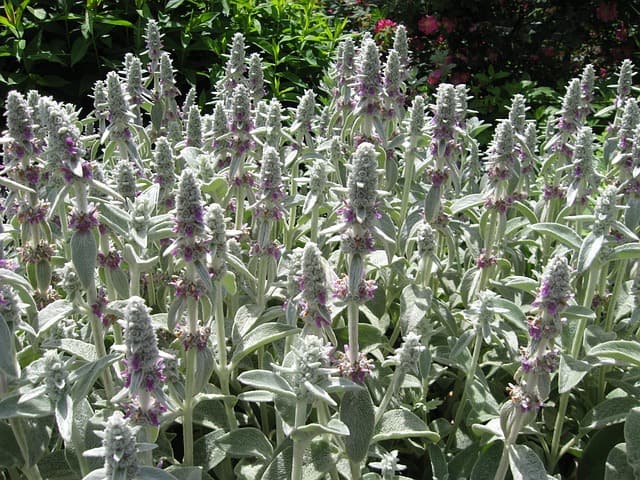
Lamb’s Ear, with its velvety, silvery-green foliage, creates a beautiful textural contrast with the bold blooms of hydrangeas. Its soft, fuzzy leaves add a touch of whimsy and elegance to the garden, inviting you to touch and feel its unique texture.
Why They Work: Lamb’s Ear thrives in similar conditions as hydrangeas, preferring well-drained soil and full sun to partial shade. Its low-growing, spreading habit creates a beautiful groundcover, complementing the hydrangea’s upright form.
Bonus: Lamb’s Ear is known for its deer resistance, offering an extra layer of protection for your hydrangeas. Its silvery-green foliage also provides a beautiful backdrop for the hydrangea’s vibrant blooms.
Catmint: A Symphony of Color and Fragrance
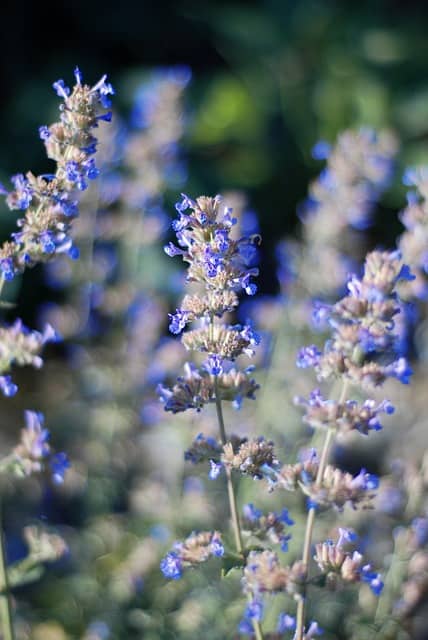
Catmint, with its vibrant blue flowers and aromatic foliage, adds a touch of charm and fragrance to the garden. Its delicate blooms attract butterflies and bees, adding a touch of life and movement to your space.
Why They Work: Catmint thrives in similar conditions as hydrangeas, preferring well-drained soil and full sun to partial shade. Its compact, bushy habit creates a beautiful contrast with the hydrangea’s upright form.
Bonus: Catmint is known for its ability to repel insects, offering a natural pest control solution for your hydrangeas. Its fragrant foliage also adds a delightful aroma to the garden.
Japanese Maple: A Touch of Elegance and Grace

Japanese Maple, with its delicate foliage and graceful branches, adds a touch of elegance and sophistication to the garden. Its vibrant fall foliage provides a stunning backdrop for the hydrangea’s fading blooms.
Why They Work: Japanese Maple thrives in similar conditions as hydrangeas, preferring well-drained soil and partial shade. Its delicate foliage and graceful form create a beautiful contrast with the hydrangea’s bold blooms.
Bonus: Japanese Maple offers a stunning display of fall colors, adding visual interest to your garden even after the hydrangeas have faded. Its delicate branches also provide a natural framework for the hydrangea’s blooms to cascade gracefully.
Snapdragons: A Touch of Whimsy and Color
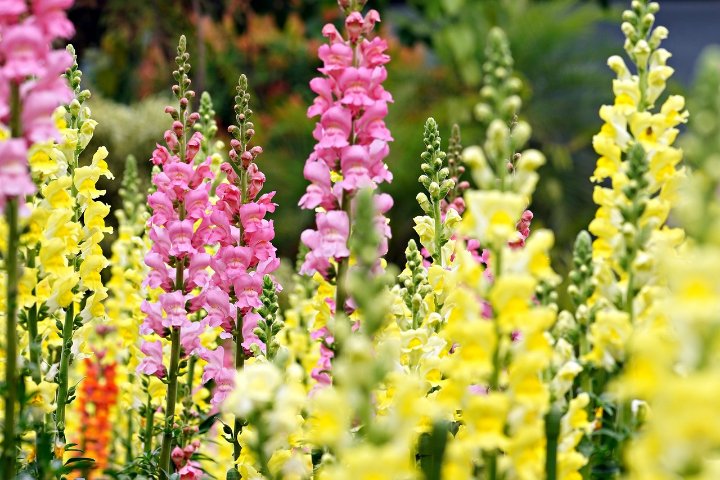
Snapdragons, with their vibrant blooms and unique, dragon-shaped flowers, add a touch of whimsy and color to the garden. Their diverse range of colors, from yellows and oranges to pinks and purples, creates a beautiful contrast with the bold blooms of hydrangeas.
Why They Work: Snapdragons thrive in similar conditions as hydrangeas, preferring well-drained soil and full sun to partial shade. Their upright habit creates a beautiful contrast with the hydrangea’s rounded form, adding visual interest and depth to the garden.
Bonus: Snapdragons are known for attracting pollinators like butterflies and bees, adding a touch of life and movement to your garden. Their vibrant blooms also provide a beautiful backdrop for the hydrangea’s lush foliage.
Foxgloves: A Symphony of Elegance and Height

Foxgloves, with their tall spires of vibrant flowers, add a touch of drama and elegance to the garden. Their delicate, bell-shaped blooms create a beautiful contrast with the round, showy heads of hydrangeas, creating a visually stunning layered effect.
Why They Work: Foxgloves thrive in similar conditions as hydrangeas, preferring well-drained soil and partial shade. Their verticality adds a sense of height and depth to the garden, complementing the hydrangea’s rounded form.
Bonus: Foxgloves attract hummingbirds and other pollinators, adding a touch of life and movement to your garden. Their foliage also provides a natural barrier against weeds, reducing maintenance efforts.
Astilbe: A Touch of Airiness and Texture

Astilbe, with its delicate plumes of feathery flowers and attractive foliage, adds a touch of airiness and texture to the garden. Their vibrant blooms, ranging from white and pink to red and purple, create a beautiful contrast with the bold blooms of hydrangeas.
Why They Work: Astilbe thrives in similar conditions as hydrangeas, preferring well-drained soil and partial shade. Their graceful plumes create a beautiful layering effect, enhancing the overall visual appeal of the garden.
Bonus: Astilbe is a relatively low-maintenance plant, making it an ideal companion for busy gardeners. Its attractive foliage also provides a beautiful backdrop for the hydrangea’s vibrant blooms.
Beyond the Basics: Additional Tips for Success
Consider Your Garden’s Conditions: Choose companions that thrive in similar conditions as your hydrangeas, considering your climate, soil type, and sunlight exposure.
Play with Colors and Textures: Experiment with different shades and forms to create a visually stunning and harmonious garden.
Space Your Plants Appropriately: Allow enough space for each plant to grow and thrive.
Maintain Proper Care: Water, fertilize, and prune your hydrangeas and companion plants regularly to ensure their optimal health and growth.
By choosing the right companions, you can create a truly breathtaking garden where hydrangeas shine even brighter, surrounded by a symphony of color, texture, and life. So, get creative and let your imagination bloom!



